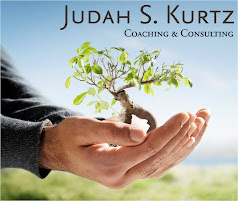2011 has been quite a year – for everyone I know. It has been challenging on every front, but has also been a year in which we have learned a great deal about ourselves, and our wants and needs. And there has been a large string of wins.
We can get so caught up in the go-go-go of the holiday season, and the pressure that comes with “wrapping up,” we forget to take the time to authentically pause (not just rest) and reflect on all the successes and lessons we have experienced.
REFLECT
Every year, I do the comprehensive "Looking Back, Looking Forward (LBLF) exercise". And 2011/2012 will be no different. Rather than rehashing it for you, I’ll let you click over there yourself and run through it. Instead, I want to focus on some key points.
Of course, reflect on the year and consider these questions:
- What did you accomplish that you intended to accomplish?
- What did you accomplish above and beyond what you intended?
- What didn’t you accomplish that you intended?
- What actually occurred
- What you did to address the issues (or not)
- Who you were (or not) that brought you success (or not)
- Who/what you choose to be/do going forward
CELEBRATE
It took something for you to push through, to walk through the fire, to come to some new realizations about who you are and what you want/need. Celebrate that. Even if the outcome was not what you were hoping or expected, remember that these experiences were custom created by and for you so that you can learn some important aspects about yourself and life that are essential for your future.
Learning and growth are important, so don’t forget to celebrate this. And of course, don’t skirt over the many accomplishments and successes you’ve had over the year – no matter how big or small. Each are wins, and it is essential that we give ourselves credit and snaps for every step that got us there. They are not just items you are ticking off your “to do” lists.
CREATE ANEW
Be sure to do the LBLF exercise now. Don’t put it off, as you want to start the new year off with clarity and power. Leave 2011 in 2011, and design your 2012. This is not a series of New Year’s resolutions, as I don’t believe in fixing and correcting. Rather, I believe in creation and commitment based on your core values, your heart’s desire, and what you know you want for yourself and your life moving forward.
Again, this is about what you want to be/do/have in the coming year. This is also about what you want to learn. Just like creating a development plan at work, consider what you want to focus on in your own life and put some SMART goals in place so that you can make them happen.
Clearly, life will throw new experiences at you and you will need to allow the river to carry you where it will, but you will find that if you place some emphasis on growth and development as a goal, it will be less stinging when something unexpected shows up. You can say to yourself, “Ah, here’s an opportunity for me to expand who I know myself to be,” and look for where you can bring the very best of you to the table.
One final thing I like to do is create some themes for myself for the year – in other words, setting some specific intentions. For 2011, I created three key themes that I defined at the end of 2010:
- Phoenix – completion à rebirth à growth à expansion
- Opening of self to other realms of thought, heart, and spirit
- Abundance and freedom
As you consider your 2011/2012, remember to return to your core by defining/honoring your values, incorporating both successes and lessons, and celebrating how beautiful your life is/has been. You made it happen. And will continue to do so, whether you do the LBLF exercise or not. However, the more clear and intentional you are, the richer the experiences in 2012 will be.



















